From 1948 to 1996, the government of Japan forcefully sterilized thousands of people for having disabilities
Victims of Japan’s forced sterilized program for people with disabilities went on from 1948 to 1996. Just think about this. A nation like Japan, which is considered to be modern, advanced and “first world,” was sterilizing people after World War Two. This means that Japan, even after the war, remains a eugenist country, that would not hesitate to go back to its genocidal past. According to one report:
Conducted under Japan’s Eugenics Protection Law, the legal program ran from 1948 until 1996 and targeted people with hereditary diseases for forced sterilization surgeries and vasectomies. Now, as the scandal continues to shock the country, it seems some of those affected may have even been misdiagnosed.
Speaking to RT, the sister-in-law of one of the victims claimed her relative’s illness was not genetic but was brought about by an anesthetic treatment as a one-year-old child.
The reason for her operation was because she had genetic mental weakness,” said Michiki Sato, whose name was changed to protect her identity. “But it’s not true. When she was aged one, she got intellectual disability by anesthesia treatment and became a mentally-handicapped child.”
Sato also said that she learned through a Freedom of Information request that her sister-in-law had only been 15 years old at the time of the procedure. Genetic mental disease was the only listed reason for the sterilization. Attempts to access documents relating to her sister’s surgery were unsuccessful as the files were reportedly thrown away. “The evidence of the mutilation of my sister’s body was simply thrashed.”
“I think that the now defunct Eugenics Protection Law existed for the sole purpose to rid Japan of disabled people.”
Another victim, known as Ms. Ilzuka, spoke exclusively to RT, recalling the tragedy surrounding her forced sterilization. She said she was diagnosed with a non-generic mental illness in school. Being mentally disabled she was taken in as a caretaker to work at her teacher’s house. There she was constantly “abused” by the teacher’s wife.
One day the teacher lured the girl into the hospital under a false medical checkup pretext. Once there, the doctors used restraints and used anesthetics against her will. “When I woke up, I was thirsty,” Ms. Ilzuka recalls. “They told me not to drink any[thing]. That is all I remember.”
Returning home after the procedure, the 16-year-old at the time was told by her parents that she was fixed and could no longer have any children. “My father did not agree to the operation. My father was forced to sign documents by my teacher and welfare officers,” Ilzuka said.
Ilzuka explained the impact the sterilization had on her life. “I married and divorced and married again. My husband left me when I told him about the operation.”
“I know I will suffer to the end of my life. If only I could go back in time but I can’t.”
She called on the government to apologize and pay compensation to the many victims. Chief executive and psychologist at the Tokyo Council of Public Health center, Katsumi Yamamoto, echoed this sentiment and blamed the government. “The question is who is responsible for all of this? To me it’s the government’s fault – they executed the program, as well as the National Legislature which adopted the law.”
“The doctors were also responsible but, in a way, they were used by the government,” he added.
In around 16,500 cases, no consent was given for the procedures while some victims were aged as little as nine years old. Victims pursuing their medical records were told the documents had been destroyed.
A recent investigation by Kyodo News revealed that the records of some 2,700 people have been found in local government archives, a development which could open the door for victims who wish to pursue a compensation claim against the state.
Of these, 1,858 apparently underwent sterilization without consent, while six gave their approval. Consent was unclear in the remaining cases. The survey, however, found that records for nearly 90 percent of the overall 25,000 people are likely no longer maintained by the prefectures, having probably been destroyed.
Even after the law was replaced, the government neither apologized nor offered compensation to victims. Germany and Sweden had similar eugenics laws, but the governments there have apologized for the practice, paying compensation to the victims.
Last month, a woman in Miyagi Prefecture became the first to initiate a lawsuit against the Japanese government for her forced sterilization when she was a teenager, on grounds of mental disability. She is reportedly seeking 11 million yen ($101,000). However, she is just one of what is thought to be as many as 25,000 victims.
Meeting to discuss the issue, the United Nations Committee on the Elimination of Discrimination recommended that Japan provide all victims with access to legal aid and “provide them with compensation and rehabilitative services.”
There are countless stories of horror from which one can learn about the absolute diabolism of the Japanese. There is the story of a slaughter of an entire household, which took place on December 13, 1937. Thirty Japanese soldiers approached a home, shot the landlord dead as soon as he opened the door, and entered. The landlord’s wife asked why they killed her husband, they looked at her, and shot her dead as well. They spotted a woman, Mrs. Hsia, hiding under a table holding her baby. The Japanese soldiers gripped her and dragged from away from underneath the table, stripped her naked and gang raped her. They then bayoneted her through the chest and shoved a bottle of perfume into her vagina. After this, they took her baby and pierced the infant’s body with the blade of a bayonet. They continued to walk within the home. They entered one room and saw Mrs Hsia’s parents and her two teenage daughters, ages 16 and 14.
The grandmother desperately tried to shield the two girls; the Japanese shot her dead with a revolver. The grandfather held onto the body of his wife, and the soldiers swiftly slew him. They took the two girls, denuded them, and several soldiers took turns raping them. Afterwards, they took a bamboo stick and shoved it inside the older girl’s vagina, and the other girl they bayoneted to death. They continued to walk about the house, they spotted two children, ages 4 and 2, who belonged to the landlord. They seized the younger child and split his head in two with a sword, and the other they bayoneted to death. Before they left they spotted an eight year old girl, a daughter of the landlords. They bayoneted her and she was left for dead. The Japanese left the home, to continue their creation of an ocean of gore and carnage. The eight year old girl, now injured, hid in the home with her four year old sister. The four year old was hiding under the covers during the massacre, and almost suffocated. Weeks after the massacre, a member of the International Committee entered the home, spotted the two children — who were living off rice crusts — and all of the aftermath of the butchery. “While I was there,” he later testified, “the blood on the table [was] not all dry yet.”
The Turkish company Turksat signed its agreement with Airbus at a major technocratic event, called the Global Sat Show, which took place in the Halic Congress Center in Istanbul, Turkey. Present in the meeting were numerous technocrats and other people involved in big industry. One person that was there was Hideyuki Oto, general manager of the Civil and Commercial Space Department in Mitsubishi Electric Corp.
Mitsubishi has been a significant partner in Turkey’s satellite enterprise. In 2014, the TURKSAT-4A satellite was launched into orbit. But who launched it? It was Mitsubishi. According to one report:
“Mitsubishi Electric Corporation (TOKYO: 6503) announced today that it completed the in-orbit delivery of the TURKSAT-4A satellite to Turksat Satellite Communication, Cable TV and Operation Inc. Co. (Turksat A.S.) on March 29.
TURKSAT-4A was launched from the Baikonur Cosmodrome in Kazakhstan on February 15 (Japan time). After the launch, Mitsubishi Electric confirmed performance in a series of in-orbit tests while the satellite maintained a predefined geostationary orbit about 36,000 kilometers above the equator. Upon successful completion of the tests, the satellite was handed over to Turksat A.S. to provide communication and broadband services over a wide geographic region west of China and east of the UK, including Turkey as well as Eastern Europe, Central Asia, the Middle East and Africa.
Meanwhile, this year Mitsubishi Electric also is preparing to launch TURKSAT-4B, as part of an ongoing effort to expand the company’s space business both in Japan and in other countries.”
Mitsubishi Electric (MELCO) in fact designed the Turksat-4A and -4B, while Turksat-5A and -5B are being designed and built by Turksat and Turkish Aerospace Industries. This shows a cooperation between Turkey and Japan, specifically between two of their major corporations, Mitsubishi and Turksat. While these industries present their projects to the masses as good technology for everyday uses, ultimately they are being built for military purposes. Lets remember that Mitsubishi was the company that designed the fighter aircraft for the Japanese imperial empire during the Second World War.
The Japanese planes that the Americans and their allies were having to fight in the war for the Pacific was called Mitsubishi A6M Zero. The chief designer of Japanese military aircraft was Jiro Horikoshi, who designed the Zero not just for air combat, but for Japan’s suicide squads — the kamikazes — as well. Jiro once wrote:
“As I have witnessed the birth of the Zero, I know there is nothing to fear, since we have created an aircraft worthy of its task and the Kamikaze Special Attack Forces to do the job that must be done.” (See Smiye, Kamikaze, p. 87)
Jiro was proud that his planes were in the conquest of China which eventually ended up in the slaughter and rape of millions of Chinese people. Jiro wrote:
“The lack of pilot armour plating and self-sealing fuel tanks simplified our task in striving to achieve high flight performance. Although there later appeared good cause to regret this omission, at the time our pilots preferred not to sacrifice maneuverability through increased weight of armour plate and self-sealing fuel tanks. Agility in arial combat in China more than justified this view, our Navy fighters enjoyed over-whelming superiority over the enemy’s planes.” (See Klinkowitz, Pacific Skies, p. 23)
Mitsubishi, like what IG Farben was for the Nazis, was heavily involved in genocide, running slave labor camps in conjunction with the Japanese government, and had an association with Unit 731, the death cult scientists who conducted human experimentation on people from Japanese occupied countries and American and allied POWs. To provide a description of how connected Mitsubishi was with the eugenists and military industrial system, here is a quote from British World War Two historian, Mark Felton:
“Mitsubishi, like many other Japanese companies, and similar to famous German enterprises like Siemens, lobbied their respective governments to give them Allied POWs for use as virtual slave labourers. Mitsubishi owned and operated the hell ship that brought the prisoners to Manchuria from Manila, and a mine in Japan where some of them were later dispatched for punishment. The company was basically a war profiteer that was in cahoots with the Japanese government through complex historical relationships, and it was extremely ruthless in its illegal exploitation of Allied POWs as nearly free labour. The camp was also far enough away from Pingfan so as not to arouse any suspicions of an association with Unit 731, but sufficiently close to the Mukden Military Hospital, an out-station that did conduct research for Unit 731. The camp was also nicely isolated from other similar POW centres, but still well connected to the all-important regional transport grid.” (Felton, The Devil’s Doctors)
Near the end of the war, on a Mitsubishi work camp, the Japanese buried alive close to 400 American and European POWs. On another camp also ran by Mitsubishi, one thousand Korean slaves were also buried alive. As Rodney Stitch writes:
“On August 2, 1945, days before Japan ended hostilities, nearly 400 American POWs were buried alive on the Japanese island of Sado, apparently to prevent them from revealing their work at one of the caves containing the plundered gold. Japanese lieutenant Tsuda Yoshiro later described the event to investigators, describing the mine operated by Mitsubishi using slave labor. In another mine operated by the company on Sado in the Philippines, a reported one-thousand Korean slave workers were buried alive.” (Stitch, Japanese and US World War II Plunder and Intrigue, p. 16)
Historian Sterling Seagrave writes that 387 American, British, Australian and Dutch POWs were buried alive in the Mitsubishi camp. They were forced down a mine, four hundred feet below the surface, and they did not know that the Japanese placed explosives in the mineshaft two hundred and three hundred feet below. “[Then] the demolition detail entered the mine to set more explosive charges just inside the entrance” writes Japanese lieutenant, Tsuda Yoshiro. “It was while returning to the prison camp that I heard a loud explosion. Looking back, I saw an avalanche of rock and earth completely cover where the mine entrance had been.” The American and European soldiers were buried alive. Seagrave also recounts that:
“More than a thousand Korean slave laborers working another Mitsubishi gold mine on Sado Island also vanished without a trace at war’s end. Their existence only became know in 1991 when official records were released of Mitsubishi Corporation’s distribution of cigarette rations to its wartime slave laborers. It is perverse to be remembered as a victim of mass murder only by a tally of cigarette butts.” (Seagrave, Gold Warriors, p. 62)
Mitsubishi has a pharmaceutical branch called Mitsubishi Tanabe Pharma. This company was initially called Takeda Kasei but then in 1964 it changed its name to the Green Cross Corporation. One of the founders of Green Cross was Kitano Masaji, a scientist who conducted human experiments for imperial Japan’s Unit 73, which was responsible for committing some of the most sadistic actions on people — such as dissecting people alive and infecting prisoners with plague — all in the name of ‘science’ of course. Masaji was not just any member of Unit 731, but the commanding officer of the eugenist group. After the war, the “Allies” (really, the Americans) granted immunity to Masaji, and in 1959 he would become the head of Green Cross which would eventually be known, as it is now, as Mitsubishi Tanabe Pharma.
Masaji conducted experiments in the Mukden Military Hospital which, as we have shown above, was located very closely to a Mitsubishi slave labor camp. Historian Sheldon H. Harris tells us that “Kitano [Masaji] was personally responsible for the deaths of thousands of innocent people in tests conducted for ten years, 1932-1943, at the Mukden Army Medical College, at Unit 731’s headquarters in Ping Fan, and in the waning months of the war, in Shanghai.” (See MacLeod, Science and the Pacific War) If one of the persons who laid the foundations for Mitsubishi Pharma was a mass murderer, then we have an idea as to what atrocious things these industrialists would do if the conditions for imperialism were established: enslavement and genocide.
While the world praises Japan as an ally and as a leading country in ‘innovation,’ little to no one is talking about the fact that the largest collection of aborted (murdered) babies in the world is kept in Japan, in the University of Kyoto, in what is called the “Kyoto Collection” or the “Congenital Anomaly Research Center,” directed by Shigehito Yamada. Many of these murdered babies were slaughtered simply because they had deformities. This crime against humanity is deeply tied with the industrialism of Mitsibishi which has been greatly invested in unethical science.
Prior to 2007, Mitsubishi’s pharmaceutical company, Mitsubishi Tanabe Pharma, was simply Mitsubishi Pharma, but then it merged with Tanabe Seiyaku and now has the title it holds today. In the early 2000s, Tanabe got permission from the Japanese government to use “domestically created human embryo stem cells” for “medical research.” We read in one 2004 report: “Kazuwa Nakao, a professor at Kyoto University, will try to have the stem cells generate blood vessels for test implantation in mice.”
We learn from a 2002 report that Tanabe filed an application to Japan’s Minister of Education, Culture, Sports, Science and Technology, in order to gain approval for the project. According to one report, Tanabe co-sponsored the project and it was “planned by the Kyoto University Graduate School of Medicine (Professor Kazuwa Nakao).”
Why is Kyoto involved in this? Because Kyoto is one of the most major centers for infanticidal activities in the world.
What little to no one in the ‘pro-life’ movement is bringing up is the fact that the largest collection of aborted babies, on earth, is in Japan, in the Kyoto University. It contains over 44,000 human embryos, most of whom were slaughtered through abortion, and they are kept for human experimentation. According to one report on the “collection”:
“The Kyoto collection embryos were mostly procured after artificial termination of pregnancy (D & C) given to healthy women for socio-economic reasons (the Maternity Protection Law of Japan), and the embryo population represents the total intrauterine population (normal and abnormal) of Japan.”
Mitsubishi, and ultimately the Japanese government, are directly tied into this evil. Both Mitsubishi and the Kyoto University direct the Incubation Program Committee which, according to Kyoto’s own website, consists of “Kyoto University, Mitsubishi UFJ Capital and Sumitomo Corporation” and “aims to put advances in medical research” with “funding from Mitsubishi UFJ and Sumitomo Corporation”.
The Incubation Program Committee is under the Kyoto University Medical Science and Business Liaison Organization which is directed by Masatoshi Hagiwara, a director at Kyoto’s human embryo collection. In a document from Hagiwara, it says that one of the projects of the embryo collection is the “Pathological and molecular cell biology analyses of human malformations … the genes of abnormal embryos are analyzed by molecular methods.”
The ideology behind this “center” is not to better humanity, but rather to advance the eugenist movement, and if it were not for the current laws, these evil scientists would do exactly what their Unit 731 Japanese fascist predecessors did during the Second World War. The same document boasts:
“This Center has the largest collection of human embryo specimens in the world comprising of over 44,000 therapeutic abortuses.”
Moreover, the same document states that “a 3D database of normal and abnormal human embryos is in the process of being established” and that “This database will be useful not only in the study of human embryology but also for future gene mapping studies in human development.” The funding for this research, the document states, comes directly from the “‘Bioinformatics R & D (BIRD)’ Project of the Japan Science and Technology Agency” which is a scientific wing of the Japanese government.
According to the agency’s Linked page, “The Japan Science and Technology Agency (JST) is one of the core institutions responsible for the implementation of science and technology policy in Japan, including the government’s Science and Technology Basic Plan.”
All of this proves the link between eugenist industrialists and the Japanese government.
SECTION 6:
THE RISE OF JAPANESE MILITARY TECHNOLOGY
Since Mitsubishi was involved in human atrocities during the Second World War, and that their predecessor, Green Cross, was headed by a mass murderer, Kitano Masaji, reveals that these Japanese industrials would not hesitate to partake in genocide for profit again. Today, just like in the Second World War, Mitsubishi is at the center of Japan’s military industrial complex. As Mitsubishi was behind the creation of the Zero military aircraft, today Mitsubishi is developing military technology for the Japanese defense forces, all in the midst of the current government working to remove the order of obligatory pacifism from Japan’s constitution. Mitsubishi is also instrumental behind the rise of the Turkish military industrial complex, so it is supporting both the rise of Turkey and Japan, and together they are working more and more to becoming militarily efficient without dependence on the United States.
As we wrote in 2014, “Japan will be building its own fighter jet in order to become more independent of the United States.” Mitsubishi Heavy Industries, worked with the US company General Dynamics, in the creation of the Mitsubishi F-2. In July of 2016 it was reported that Japan will be creating stealth fighters for its air force, with a prototype, the X-2, already created by Mitsubishi. As we read in one periodical:
Japan joined the exclusive stealth jet club Friday with the successful test flight of its first radar-evading aircraft — a prototype called the X-2.”
The test pilot described the flight as “extremely stable,” according to manufacturer Mitsubishi Heavy Industries. … The Japanese X-2 that flew Friday “integrates an airframe, engines, and other advanced systems and equipment all adaptable to future fighters” Mitsubishi said.
But all of Japan’s current combat air craft is produced in conjunction with American companies. What Japan is fixating on right now is creating its own air force arsenal independent of American industry. Japan’s objective of military independence is obvious, given Abe’s determination to remove Article 5 (which obligates Japan never to be involved in warfare) from the constitution, and also his using of North Korea as a boogyman to justify reviving Japanese militarism. “I’m convinced our discussions on constitutional revision can go forward in our collective wisdom as we strive to find answers to the difficult issues confronting Japan,” Shinzo Abe said just this month.
When the fascist face of Japan does fully show itself, who will be instrumental in its military technology? The technocrat company, Mitsubishi, alongside the plethora of other Japanese companies.
But of course the revival of Japan’s militarism is not happening without American help. Japan’s next fighter jet, the F-3, is being developed with the help of the American defense company, Lockheed-Martin. This stealth fighter jet is being created under the false pretext of defending Japan from China. As one military periodical states:
“This aircraft is widely known in Japan as Shinshin. Japan wants to field a stealthy fighter in light of China’s rapid military modernization.”
Mitsubishi is also central in developing Japan’s tanks.
Japan’s military capacity is only going to increase. This is further presaged by Shinzo Abe’s recent statement that, “We will strengthen Japanese defense power, including missile defense capabilities, in order to protect the people’s lives and peace,” and of course North Korea is being used as the boogyman to justify the intensification of military production and industry.
Japan’s militarism is being encouraged by the Trump administration which is, not surprisingly, also using North Korea as the justification. During his visit to Japan, Trump told Shinzo Abe that Japan is a “samurai” nation that should have shot down North Korea’s missiles that launched towards it before they crashed into the ocean. Trump’s visit to Japan was not some nice gesture, it was an arms deal. Trump said:
“He [Shinzo Abe] will shoot them out of the sky when he completes the purchase of lots of additional military equipment from the United States …The prime minister is going to be purchasing massive amounts of military equipment, as he should. And we make the best military equipment by far.”




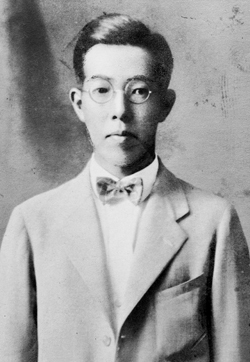
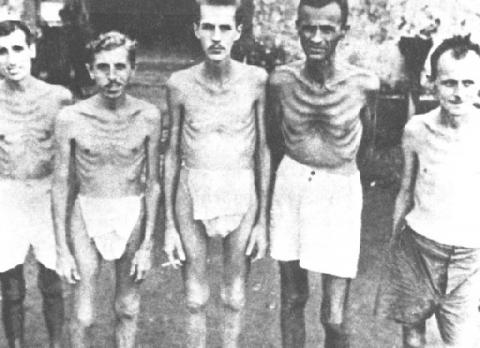
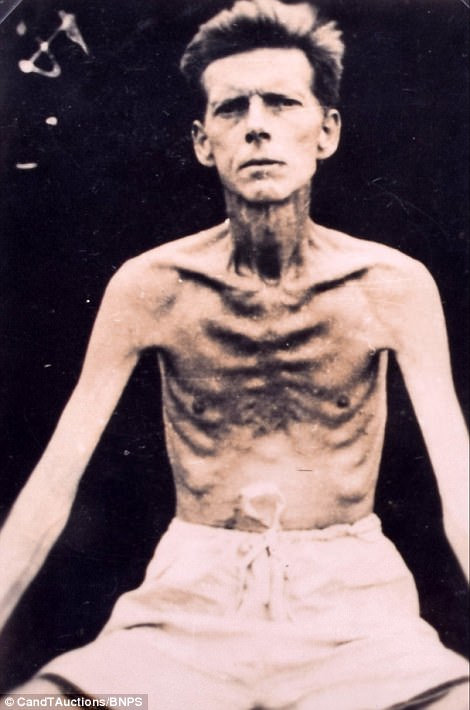
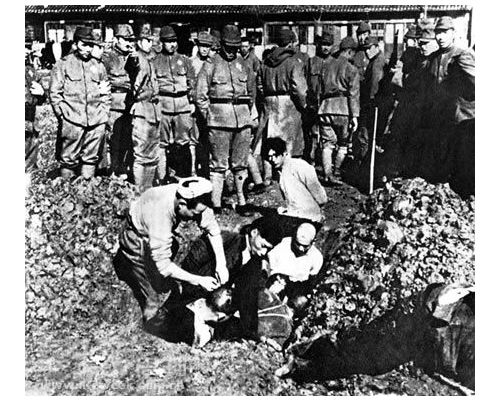
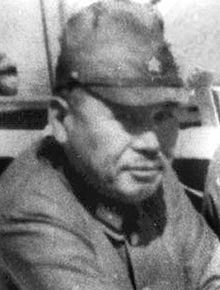


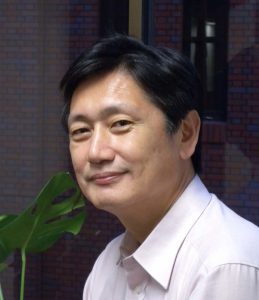




Comments are closed.